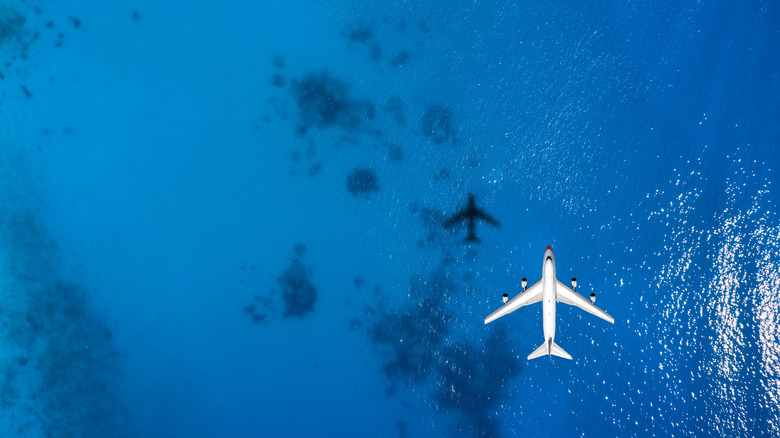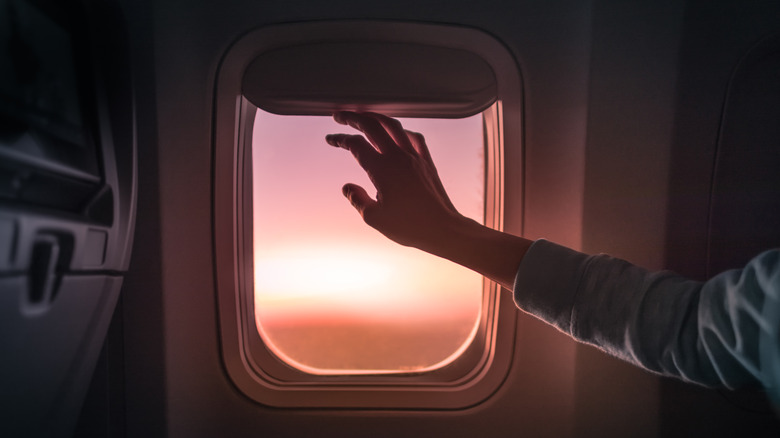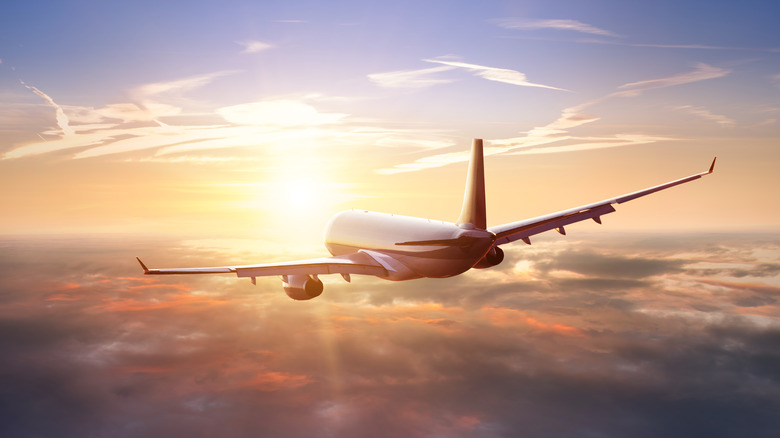Here's Why Most Planes Avoid Flying Over The Pacific Ocean
Hands up if you're one of those travelers whose idea of in-flight entertainment is watching your plane on the flight tracker instead of catching up on all the movies you missed last year. If that's you (us too!) then you probably have noticed that most flight routes aren't a direct line from point A to B. This is mostly because the curvature of the Earth makes it so that flying in a curved route is actually much faster than flying in a straight path to the destination. However, there are actually lots of reasons that flight paths might be routed in a certain path or direction, especially if you are flying over the Pacific Ocean.
If you look at our planet as a sphere it quickly becomes obvious just how massive the Pacific Ocean really is. There's a reason why Apollo 17 astronauts called the Earth a blue marble and not a brownish-green one and that's because the Pacific Ocean basically claims about half of the real estate on the planet. While distance is certainly a factor since it requires a lot of fuel to get across this great blue expanse (per Sheffield School of Aeronautics), the reasons go even deeper than that.
Time, money, and safety
It's been established that the Pacific Ocean is big ... really big. And with greater distances come greater costs since the plane needs more fuel. Executive Flyers writes that while you could just charge passengers more to fly that distance, this may lead to lots of unhappy customers and airlines losing out on sales. Not to mention that the less time spent in the air the better the experience is for passengers.
Bitlux explains that further to the cost considerations, airlines must also consider the safety factor. Longer flights carry with them a risk that if a person on board experiences a medical emergency there may not be a safe place to divert to in time to get them assistance. And in the extremely unlikely event a plane were to crash land in the Pacific Ocean, there is probably no worse place for that to happen. The chances of passengers surviving and then being found in such a vast area are not very high.
Weather and jet streams
Further to the safety concerns, weather over the Pacific Ocean is actually quite unpredictable (per Executive Flyers). There are many thunderstorms that occur over the ocean which can lead to turbulence. While planes are very much capable of flying through unexpected thunderstorms, the Points Guy writes that safety is always the first priority and taking risks is not the MO for most air traffic control. So, this is yet another reason why most routes avoid flying over the Pacific since it can be a sort of wild west of weather.
Additionally, Bitlux writes that jet streams are a significant factor in flight planning since they are key in lowering fuel costs and time spent in the air. SciJinks writes that jet streams are strong winds that blow from the west to the east all around the planet and form when warm air masses meet with cold air. Airplanes can fly in these streams and get a boost when flying in the same direction as the stream! However, if a plane is flying against the jet stream the flight will take longer and this delay is even more pronounced when flying over the Pacific.
Due to all of these reasons, the Sheffield School of Aeronautics writes that the only flights that regularly fly directly across the Pacific Ocean are westbound flights from the west coast of the United States to Australia — and these flights can be up to 14 hours long.


